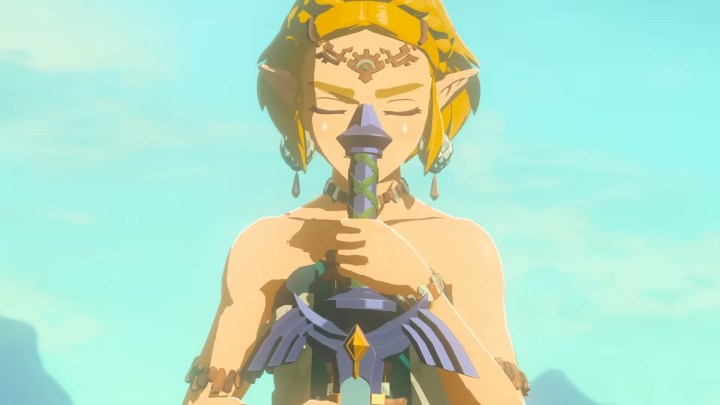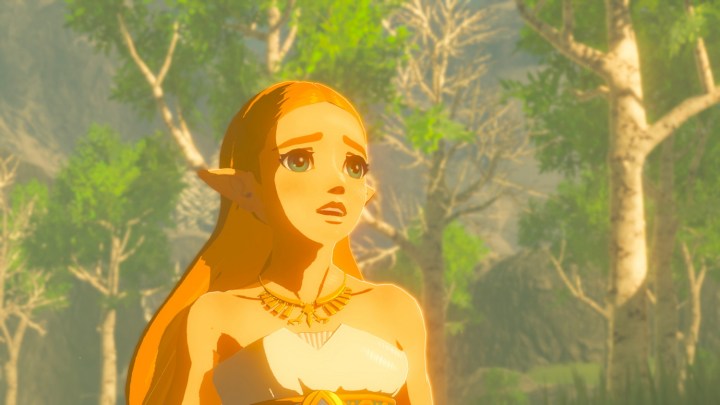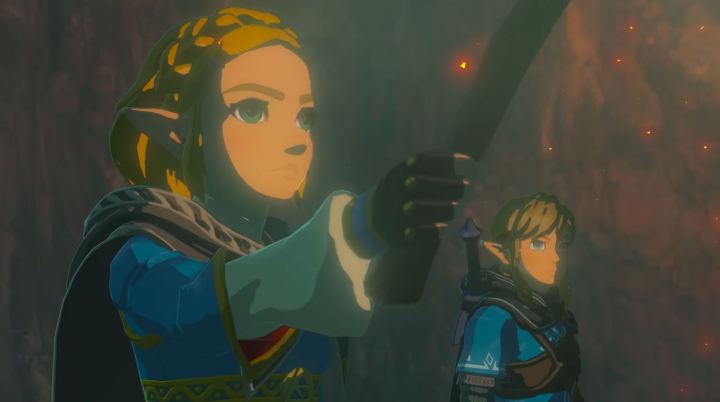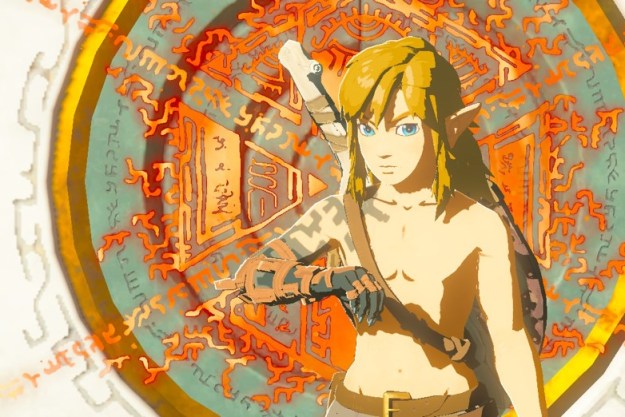
For 37 years, the Legend of Zelda series has held its place as gaming’s most important franchises. It carries the same gravitas as classic literature, with several entries in the series feeling like canonical classics that should be in the syllabus of any video game course. It’s a collection of foundational tales that helped build what an adventure game plays like, but also what a fundamental hero’s journey story looks like in the medium. And of course, standing tall at the center of Zelda’s timeless nature is … Link.
Yes, despite Zelda’s name being the core of the franchise’s branding, the Hylian princess long played second fiddle to the series’ voiceless protagonist. In early games, she was a distressed damsel to be saved. She’d get to show off a bit of her power in later ones, but Link — the hero of time — tended to get most of the attention.
That dynamic would start to see a significant shift in 2017 with the release of The Legend of Zelda: Breath of the Wild. The character would be reimagined as a more proactive researcher and receive full voice acting for the first time in a mainline Zelda title (though she’d ironically first get a voice in a set of infamous CD-i games named after Link instead). Six years and two games later, Zelda is now a more central figure in her own series despite Link still being the series’ star.
With The Legend of Zelda: Tears of the Kingdom, the character is more nuanced than she’s ever been. To better understand what’s so different about the modern iteration of the character, I spoke to Patricia Summersett, the voice behind Zelda in Breath of the Wild, Hyrule Warriors: Age of Calamity, and now Tears of the Kingdom. Summersett shared her own read on the character, painting a portrait of a regal science nerd struggling with her own power in a dangerous world she’s intent on protecting.
A fresh breath
When Summersett first auditioned for the role, she had no idea what she was getting into. All she knew was that she was reading for a fantasy RPG video game. Upon landing the gig, she quickly realized that the job was much bigger than that; she’d be the voice of Princess Zelda for the first time in one of gaming’s most revered franchises. Summersett had previously crossed paths with the first Legend of Zelda growing up, as well as Ocarina of Time, but she’d have to reach back into the series’ long history to get a sense of how previous iterations of the character were portrayed.
What’s nice that’s kept in different versions of her is that she has a regalness to her …
The Zelda series is particularly difficult in that regard due to its constant timeline shenanigans. Each game takes place in a wildly different era, sometimes centuries apart. The versions of Zelda and Link we see are often different from game to game, following the idea that we’re following different incarnations of our heroes. For Zelda in particular, there’s a specific lore reason to fill that odd plot gap: Zelda is a traditional name given to every female child in the Hyrule royal family.
While that might make the task of voicing Zelda a little confusing for a fresh actor, it created an opportunity for Summersett. She’d get to take a fresh approach to the character that wasn’t so much tied to history. That would allow her to draw on some initial pop culture touchstones before locking in her own unique voice.
“My background is theater, so I approach everything from a script. And from there it makes sense to figure out what impulses come out of you,” Summersett tells Digital Trends. “You draw from so many different sources when you put characters together. I think those initial buildings of Zelda for me were an amalgam of Emilia Clarke in Game of Thrones, Emma Watson as Hermione Granger, Claire Danes in Princess Mononoke.”
Each of those comparisons makes total sense in the context of Breath of the Wild, which would introduce players to a very different (and very British) Zelda. She has the regal air of Daenerys Targaryen, the confident nerdiness of Hermione, and that same mix of tenderness and ferocity
that we see in Princess Mononoke’s San. That last comparison especially makes sense considering how tonally similar this iteration of the series is to the works of Hayao Miyazaki, sharing the animation legend’s same love of nature and flight. The version of Zelda we see today very much feels like she stepped out of Nausicaä of the Valley of the Wind.

While outside pop culture would create an early touchpoint, Summersett would still keep her focus on the rich, sometimes complicated history of Hyrule when building her voice. Through that exploration, she began to discover what’s helped the series remain so consistently timeless over the past 37 years and use that to shape Zelda herself.
“In the same way I might draw from contemporary pop culture for my own needs, I drew from a general wash of what I knew to be the world of Hyrule and the kinds of stories that are told,” she says. “What’s great about those kinds of archetypes is that when you can flesh them out, they’re super powerful because what is underneath them is classic storytelling.”
Hyrule warrior
Summersett’s read of the series as a form of classic storytelling certainly resonates. For decades, the Legend of Zelda games have told easy-to-grasp fantasy stories in the vein of historic hero’s journey tales. There’s a universality to the way those stories unfold communicating its themes of heroism and courage through grand adventures. And for a long time, it had to do that with no more than a loose “hyah!” from its characters.
How can she be so much bigger than herself to wield power?
While Zelda wasn’t always as explicitly nuanced as she is today, much of her character could be gleaned through strong animation and art design. In games like Ocarina of Time, she’s a commanding presence every time she steps on screen. She exudes royalty but never carries herself like a stuffy monarch. Instead, she’s long been a revered fountain of wisdom who’s able to channel her power when she’s allowed to break out of the confines of her royal duties. Wind Waker, on the other hand, shows us a more sharp-witted version of the princess hidden within Tetra. Summersett still feels those traits in the current iteration of the character, and that’s something that helped her latch on to her humanity.
“What’s nice that’s kept in different versions of her is that she has a regalness to her,” Summersett says. “She’s very gracious and regal, and also has a great sense of humor when she’s allowed to show it. Those are really wonderful character points that you can latch onto and bring forward. Those are things I connect to as a person.”
Relatability is a recurring theme that comes up during our conversation about how we view the character — one that starts to make sense of why I’m perhaps so drawn to this version of her. It’s something I especially notice in Hyrule Warriors: Age of Calamity, a musou spinoff of Breath of the Wild in which Summersett reprises her role. That game puts Zelda in the spotlight, as she tries to change the course of history by defeating Ganon and stopping the Calamity.

While it’s considered non-canon due to its alternate timeline shenanigans, the character development that happens in it is crucial. We see an unusually vulnerable version of Zelda as she struggles to hone her powers. She fears that she won’t be able to do her part in saving Hyrule, letting the region’s champions down. Summersett gets at those themes in her own read of the character’s motivations.
“What’s driving every character are basic human needs,” she says. “She obviously has deep love for her parents and an unrequited ability to spend enough time with them. She wants to make people proud. She spends a lot of time, I think, being very lonely and is desperately in love with nature. She has a super strong sense of duty to protect a kingdom that she doesn’t know if she’ll be able to protect. How can she be so much bigger than herself to wield power? Those are huge themes we can all relate to in life.”
No tears
That journey takes us to The Legend of Zelda: Tears of the Kingdom, where Zelda plays an even bigger role in Link’s narrative. The sequel begins with Zelda and Link exploring the underground ruins of Hyrule, where they discover both a poisonous red gloom and the dehydrated corpse of Ganondorf. The two are split up when the villain springs to life and are sent on two very different adventures.

I won’t say too much about where Zelda’s path takes her, but it’s an especially fitting story for this iteration of the character. When she was introduced in Breath of the Wild, we got to see a scientific version of the character. She wasn’t a princess locked away in a castle, but a curious researcher working out in the field. Tears of the Kingdom follows that thread by turning her into an archaeologist who’s intent on uncovering the ancient history of Hyrule — something she’s able to accomplish here in ways she’d never dreamed of. That story makes for the character’s most endearing appearance yet.
“She is a researcher and she’s worked vigorously to use science to solve problems around Hyrule,” Summersett says. “And what’s fascinating about that is always that conflict in a character that needs both concrete knowledge in the metaphysical, or something beyond, and melding those things together to create this incredible, powerful tool. I love the fact that she’s a studious nerd and I love the fact that she feels so much because that’s not always inherent in studious characters.”
Though I’ve grown to love that version of Zelda, I’m well aware that this could be the last time I see her (save for one final hurrah in a spinoff). The series is always in a cycle of rebirth and that’s especially true of its lead heroes. I’d love to see more of this Zelda, but the arc she’s received over the past six years feels complete with Tears of the Kingdom. She gets to go on her dream research mission, learn Hyrule’s lost history, and flex an unimaginable power to save the kingdom she loves. Perhaps it’s time for her to become history herself, leaving behind a legacy for the next reincarnation of the character to follow.
With Tears of the Kingdom, Zelda truly becomes the legend we’ve always heard she is.
The Legend of Zelda: Tears of the Kingdom is out now on Nintendo Switch.
Editors' Recommendations
- This beloved feature almost ruined Zelda: Tears of the Kingdom
- Zelda: Tears of the Kingdom isn’t our Game of the Year, but it’s the strongest No. 2 ever
- The Legend of Zelda: Tears of the Kingdom DLC is not happening, says Nintendo
- Zelda: Tears of the Kingdom is almost perfect, but it could use these tweaks
- The best video games of May 2023: Tears of the Kingdom, Humanity, and more




